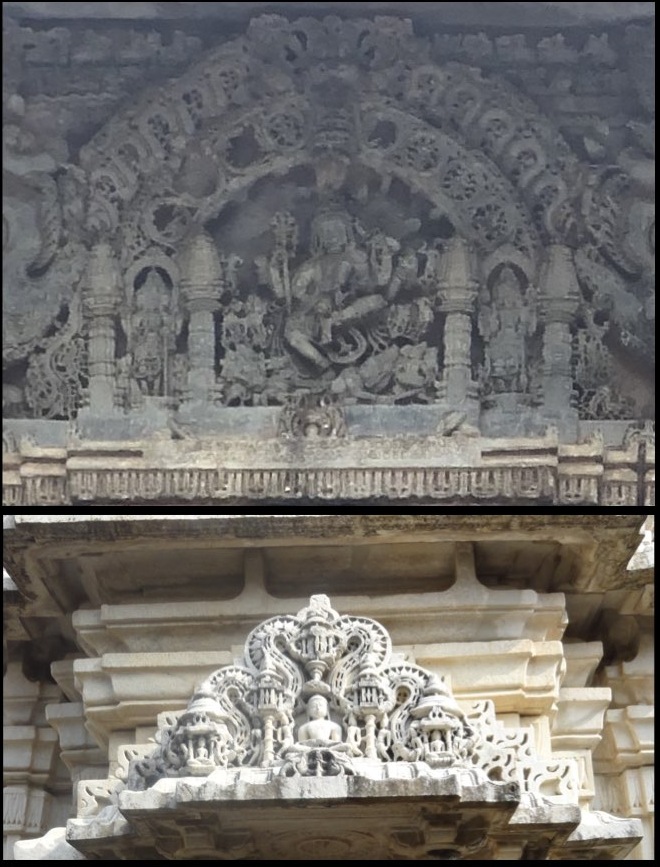People who know me, know that I am not a walking-talking dictionary or thesaurus that can spew out words every few steps I take. In fact, in my little world I can get by without the need for too many words and when I write a blog post I always wish my lexical abilities were far better because sometimes one needs the right words to properly explain something and my limitations sometimes might act as a hindrance 😦
When I wrote about Greece, I was trying to cover EVERYTHING in one post and even with my textual shortcomings I still managed to turn it into an odyssey that I split into several posts (SEVEN actually!) simply because you cannot write about Greece in ten sentences.
When we wanted a change of scene from being shut in during this pandemic, we cautiously stepped out for a bit every now and then, and among all the things we did, we have had the pleasure of visiting three of the best preserved and perhaps grandest of all the temples that the Hoysala Dynasty produced during their approximately 400 year reign from about 970AD to about 1340AD.
The Hoysalas were a formidable dynasty that flourished in South India. Originally they followed Jainism and then with time and under the influence of various gurus they became followers of Shiva and Vishnu and practiced Hinduism. They built several temples in various towns and villages of their kingdom. Most of them (about 70) still exist, but the ones talked about and always on the tourist circuit are the temples in Belur, Halebid and Somanathpur.
Places of worship all over the world, especially that ones that have been standing since times immemorial, along with invoking a sense of reverence towards the deity, awe us with their sheer beauty. So, it is no surprise that people throng these Hoysala temples that are within day-trip distances from Mysore or Bangalore.
The style of architecture has evolved from preceding styles found during the Chalukya and Ganga dynasties, and to my eyes, the intricate carvings and temple structure looked a lot the ancient Jain temples of Rajasthan/Gujarat. What is really awe-inspiring is the exquisite detailing in every sculpture! That kind of sculpting needs soft stone and the Hoysalas used soapstone that is soft yet durable.



The temples took a long time to be completed, sometimes it took a generation or two. But it is difficult to tell what came first and what followed. The temples are missing the shikara (tower) that is usually positioned on top of the sanctum – destroyed during invasions.
What makes the Hoysala Architecture unique is the star-shaped base on which the temple stands. Another important feature is the lathe-turned pillars. It is rather unbelievable that they could make such incredibly smooth-surfaced pillars all those years ago! Another characteristic is the sculpture on the outer wall friezes which are not just ornamental – no two objects on any level are the same (a great ‘find the differences’ game for kids; they can be kept busy for, well, several days :-)). Lastly, the lattice windows that allow light into the temple.



The guide at Halebid said that each of these temples would need a week especially if you wish to admire the mind-boggling number of exquisite and intricate sculptures produced by highly skilled artistes from a time when they did not have fancy tools to plan, design and produced the kind of masterpieces they have.
So as I sat down to write about our visit, try hard as I might I could not pack three temples into one blog. Consider this a sneak-peak. Sometimes an event, a place, a trip, an experience, unknowingly gives us the words to describe them! So, coming soon, Halebid, Belur and Somanathpur (in the order that we visited). Until then, stay safe y’all!
Travel tips:
1) Visit early in the morning, it gets very hot as the day progresses.
2) Free entry to the temples at Belur and Halebid, a INR 25/- fee is to be paid at Somanthpur.
3) It is possible to visit Belur and Halebid on one day, trying to visit all three might be a bit of a stretch.
4) We were happy to avail the services of a tour guide in Belur and Halebid. It helps to have them point and explain the various important aspects of the temple. It cost us Rs. 300 at each of the temple and the tour took about 45 minutes.
4) Belur and Halebid are great as outings if you find yourself over a weekend in Chikmagalur or Hassan or Sakleshpur. Combining Somanathpur with Shravanabelagola or Srirangapatna is an option.
Incredible india 🙂🙂👍👍
LikeLiked by 2 people
Thanks for the thumbs up 🙂
LikeLiked by 1 person
Incredible indeed!
LikeLiked by 1 person